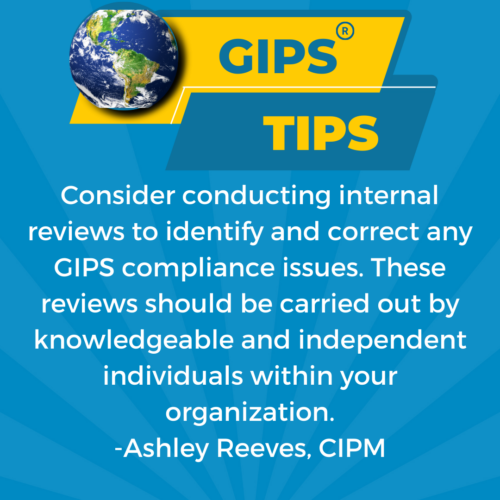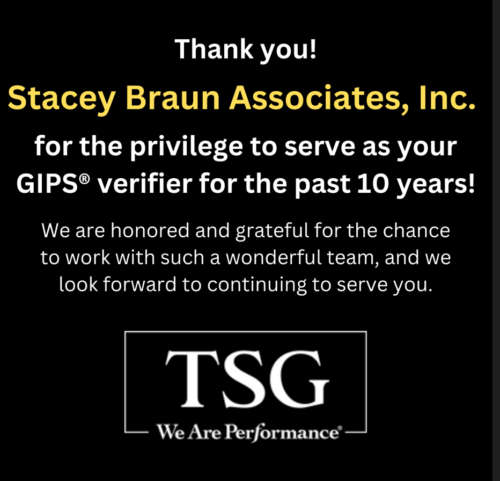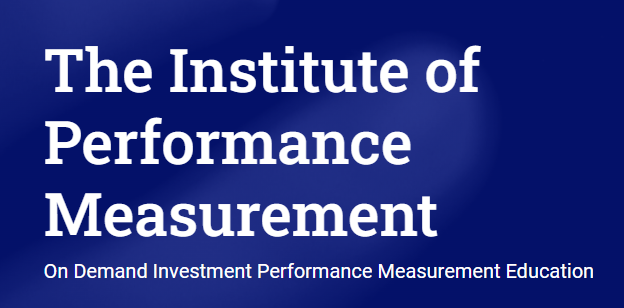Issue Contents:
Revisiting Financial Stewardship Article: The Importance of Keeping Asset Owners Fully Funded
Summary by Patrick W. Fowler
In 2012, Stephen Campisi and I penned an article for The Journal of Performance Measurement titled “Getting to the Heart of Investing: Financial Stewardship That Meets Client Objectives.” The article emphasizes the crucial role of performance professionals as fiduciaries and highlights their responsibility to act in the best interest of their clients. We critique the narrow focus on individual investment products and benchmarks and advocate for a broader perspective that considers the overall portfolio and client goals. The article underscores the importance of loyalty, prudence, and diligence in financial stewardship, urging professionals to prioritize client objectives over mere performance metrics. We also discuss the pension crisis, advocating for a Liability Driven Investment (LDI) approach along with Cash Flow Matching (CFM) to align assets with liabilities, thus reducing risks and ensuring long-term financial stability.
Fast forward to 2024 and we have financial markets characterized by volatility and uncertainty, making the principles outlined in the article more relevant than ever. Market fluctuations, geopolitical tensions, and economic uncertainties all contribute to an environment where maintaining the funding status of asset owners is crucial. Asset owners, such as pension funds, endowments, and foundations, rely on consistent and reliable returns to meet their long-term obligations. The significant underfunding of pensions, as highlighted in the article, is a stark reminder of the potential consequences of market downturns and inappropriate investment strategies. Ensuring that asset owners remain fully funded is essential for several reasons:
- Stability and Predictability: Fully funded assets provide a stable and predictable financial foundation, allowing organizations to plan and allocate resources effectively without the risk of sudden shortfalls.
- Reduced Risk Exposure: By aligning investment strategies with liabilities, as suggested through the LDI approach, asset owners can minimize exposure to market risks and interest rate fluctuations, ensuring that assets grow in tandem with liabilities.
- Long-term Security: Maintaining full funding ensures that asset owners can meet their long-term commitments, such as pension payments and philanthropic goals, thereby securing the financial future of beneficiaries.
- Enhanced Trust and Confidence: Fully funded status instills confidence among stakeholders, including beneficiaries, investors, and regulatory bodies, reinforcing the trust placed in the asset managers and the institutions they represent.
The volatile nature of today’s financial markets, and the challenges of heightened levels of scrutiny, necessitate a disciplined and client-focused approach to investment management. Performance professionals must embrace their fiduciary responsibilities, prioritizing the financial goals and security of their clients over short-term performance metrics. By doing so, they can ensure that asset owners remain fully funded, providing stability and security in an unpredictable financial landscape.
Interested in reading the full article? Click here
Have an opinion? Please share it with Patrick Fowler.
Quote of the Month
“I alone cannot change the world, but I can cast a stone across the water to create many ripples.”
– Mother Teresa
GIPS® Tips

Experience “White Glove” GIPS Standards Verification With TSG
Are you tired of being treated like just another number by your GIPS verifier? At TSG, we prioritize your satisfaction and success above all else.
Partnering with us means gaining access to a team of seasoned GIPS specialists dedicated to delivering unparalleled service and exceptional value. Whether you’re seeking a new verifier, preparing for your initial verification, or just starting to explore GIPS compliance, TSG is the best choice.
Why Choose TSG?
Unmatched Expertise: Our experienced team brings unmatched proficiency in the GIPS standards, ensuring thorough and efficient (not “never-ending”) verifications.
Personalized Support: We understand that the journey toward GIPS compliance is complex. That’s why we offer ongoing support and guidance as needed, as well as access to a suite of exclusive proprietary tools, designed to make compliance and verification as easy as possible for you and your firm.
Actionable Insights: When you choose TSG, you will work with ONLY highly experienced senior-level GIPS and performance specialists. Their expertise translates into actionable advice, helping you navigate the complexities of the Standards in the most ideal way for your firm.
Hassle-Free Experience: At TSG, we guarantee your satisfaction and we do not lock our clients into long-term contracts.
Ready to Experience the TSG Difference?
Take the first step towards a better GIPS standards verification. Schedule a call or request a no-obligation proposal today at GIPSStandardsVerifications.com.
The Journal of Performance Measurement®
This month’s article brief spotlights, “What Could Have Been: The Presentation of Hypothetical Performance,” by Michael Caccese of K&L Gates and Lance Dial of K&L Gates, which was published in the Spring 2024 issue of The Journal of Performance Measurement. You can access this article by subscribing (for free) to The Journal (link here).
In some cases, investment advisers may seek to present “hypothetical performance,” i.e., performance of a strategy that was not actually achieved by any client of the adviser. While this information can be helpful to certain investors, the United States Securities and Exchange Commission (“SEC”) has long viewed hypothetical performance skeptically; however, amendments to the rules governing the adviser advertising have set forth specific conditions under which advisers can now show hypothetical performance. This article outlines the new SEC requirements, discusses some of the policy rationale behind the rules, and offers some observations for advisers to consider when assessing their own use of hypothetical performance.
To confirm your email address, click the graphic below. If you’re a subscriber but haven’t received a link to the current issue, please reach out to Doug Spaulding at DougSpaulding@TSGperformance.com.
ATTN: TSG Verification Clients
Attention: TSG Verification Clients Attending the 28th Annual GIPS Conference
TSG will host a dinner on September 17th for clients and invited guests. Please email Chris Spaulding if you are interested in joining us. CSpaulding@TSGperformance.com
As a reminder, all TSG verification clients receive full, unlimited access to our Insiders.TSGperformance.com site filled with tools, templates, checklists, and educational materials designed to make compliance and verification as easy as possible for you and your firm.
Contact CSpaulding@TSGperformance.com if you have any questions or are having trouble accessing the site.
TSG Milestones
Welcome To The Performance Measurement Forum
Ontario Municipal Employees’ Retirement System (OMERS)!
The Performance Measurement Forum has met 103 times over the past 25 years and our next meetings are scheduled for November in Barcelona, Spain and Charleston, SC. This month we celebrate and recognize our newest member, OMERS.
The Performance Measurement Forum and Asset Owner Roundtable are interactive networking and practical information exchanges where performance measurement professionals examine important topics in an atmosphere conducive to dialogue, knowledge sharing, and networking. Members engage with global industry leaders to explore a variety of performance and risk topics, implementation strategies, management challenges, and policy solutions that directly apply and influence their proficiencies and effectiveness.
These one-of-a-kind learning and information exchange environments provide the capabilities and resources to give today’s performance measurement professionals the knowledge necessary to benefit themselves and their organizations.
Contact Patrick Fowler if you would like information about how you can be part of this dynamic group.
TRIVIA TIME
Here’s This Month’s Trivia Questions; Answers In The Next Issue!
Responses received with all correct answers will be recognized in the next month’s issue.
1. What was the first book published by Jane Austen?
2. Which two countries have the longest shared international border?
3. What year was the first iPhone released?
Submit your responses to: PFowler@TSGpeformance.com
Last Month’s Trivia Solutions.
1. What New York City bar was the location of a 1969 uprising credited as sparking the modern LGBTQ+ rights movement?
Answer: The Stonewall Inn
2. What are the first 22 cards in a tarot deck called?
Answer: The Major Arcana
3. What was the name of the possessed hotel in Stephen King’s novel (and movie) The Shining, based on the real-life Stanley Hotel in Colorado?
Answer: The Overlook Hotel
Correct responses to the trivia questions:
- Anthony Howland
- Douglas Spaulding
Please submit your trivia solution or puzzle ideas to Patrick Fowler.
Revisiting Financial Stewardship Article: The Importance of Keeping Asset Owners Fully Funded
Summary by Patrick W. Fowler
In 2012, Stephen Campisi and I penned an article for The Journal of Performance Measurement titled “Getting to the Heart of Investing: Financial Stewardship That Meets Client Objectives.” The article emphasizes the crucial role of performance professionals as fiduciaries and highlights their responsibility to act in the best interest of their clients. We critique the narrow focus on individual investment products and benchmarks and advocate for a broader perspective that considers the overall portfolio and client goals. The article underscores the importance of loyalty, prudence, and diligence in financial stewardship, urging professionals to prioritize client objectives over mere performance metrics. We also discuss the pension crisis, advocating for a Liability Driven Investment (LDI) approach along with Cash Flow Matching (CFM) to align assets with liabilities, thus reducing risks and ensuring long-term financial stability.
Fast forward to 2024 and we have financial markets characterized by volatility and uncertainty, making the principles outlined in the article more relevant than ever. Market fluctuations, geopolitical tensions, and economic uncertainties all contribute to an environment where maintaining the funding status of asset owners is crucial. Asset owners, such as pension funds, endowments, and foundations, rely on consistent and reliable returns to meet their long-term obligations. The significant underfunding of pensions, as highlighted in the article, is a stark reminder of the potential consequences of market downturns and inappropriate investment strategies. Ensuring that asset owners remain fully funded is essential for several reasons:
- Stability and Predictability: Fully funded assets provide a stable and predictable financial foundation, allowing organizations to plan and allocate resources effectively without the risk of sudden shortfalls.
- Reduced Risk Exposure: By aligning investment strategies with liabilities, as suggested through the LDI approach, asset owners can minimize exposure to market risks and interest rate fluctuations, ensuring that assets grow in tandem with liabilities.
- Long-term Security: Maintaining full funding ensures that asset owners can meet their long-term commitments, such as pension payments and philanthropic goals, thereby securing the financial future of beneficiaries.
- Enhanced Trust and Confidence: Fully funded status instills confidence among stakeholders, including beneficiaries, investors, and regulatory bodies, reinforcing the trust placed in the asset managers and the institutions they represent.
The volatile nature of today’s financial markets, and the challenges of heightened levels of scrutiny, necessitate a disciplined and client-focused approach to investment management. Performance professionals must embrace their fiduciary responsibilities, prioritizing the financial goals and security of their clients over short-term performance metrics. By doing so, they can ensure that asset owners remain fully funded, providing stability and security in an unpredictable financial landscape.
Interested in reading the full article? Click here
Have an opinion? Please share it with Patrick Fowler.
Industry Dates and Conferences
- September 25 – London Performance and Risk Summit
- November 7-8 – Autumn EMEA Meeting of the Performance Measurement Forum – Barcelona, Spain
- November 20 – Fall Meeting of the Asset Owner Roundtable (AORT) – Charleston, SC
- November 21-22 – Fall North American Meeting of the Performance Measurement Forum – Charleston, SC
For information on the 2024 events,
please contact Patrick Fowler at 732-873-5700.
Institute / Training
Access TSG’s Online Training
Content With One Pass
Question 7: Do you agree with requiring both gross-of-fees and net-of-fees returns for Required OCIO Composites?
While it should be recommended, there should be no additional or different requirements that OCIO strategy composites need to adhere to that others do not. We think the requirements should remain consistent throughout; i.e., the same recommendation for both OCIO firms and non-OCIO firms.
That’s a Good Question
Under the new SEC Marketing Rule, are sleeves considered hypothetical performance?
The Rule states that “extracted performance” is considered “hypothetical performance, which comes with additional requirements and limitations. And so, the question is do sleeves constitute extracted performance?
This is something we have discussed/debated internally, as there is no guidance, as of yet.
We believe that if the sleeves are managed as, if you will, separate sub portfolios within the accounting system, they would not constitute extracted performance and therefore not be hypothetical. The rationale behind this is that these sub portfolios can be distinguished from one another within the system. It is a convenience for the client to allow them to have a single custodial account, that is broken up at the manager by their portfolio accounting system. These systems tend to use fairly sophisticated logic to distinguish assets by strategy, thus allowing the system to easily break the account into separate sub portfolios, a.k.a. sleeves.
That said, this is our opinion. We encourage you to consult with your internal compliance professionals as well as your outside counsel. If you are a TSG verification client, we would be happy to discuss this further with you.
Please submit your questions to Patrick Fowler.
Potpourri

Article Submissions
The Journal of Performance Measurement® Is Currently Accepting Article Submissions
The Journal of Performance Measurement is currently accepting article submissions on topics including performance measurement, risk, ESG, AI, and attribution. We are particularly interested in articles that cover practical performance issues and solutions that performance professionals face every day. All articles are subject to a double-blind review process before being approved for publication. White papers will also be considered. For more information and to receive our manuscript guidelines, please contact Douglas Spaulding at DougSpaulding@TSGperformance.com.
Submission deadlines
Fall Issue: October 11, 2024
Winter Issue: January 13, 2025
Compliance Corner
How Has The Marketing Rule Affected SMA Managers Differently From Private Funds?
In a recent FundFire article, Vigilant Director, Will Clark, CIPM, MBA, discusses how the transitions required by the Marketing Rule may have affected SMA managers differently from Private Funds.
Although the Private Fund Rule has been overturned by an appeals court, the Marketing Rule remains in full effect and is a top priority for the SEC.
While current enforcement may focus on more obvious violations, it is expected that the Division of Enforcement will eventually turn its attention to the Private Fund sector as the SEC broadens its investigations.
It is crucial for Private Funds to take all necessary steps to ensure compliance with the Marketing Rule.
Book Review
A Song For Everyone, by John Lingan
Review by David D. Spaulding, DPS, CIPM

I’ve been a fan of CCR for decades, as well as of John Fogerty as a solo artist. And so, when I discovered this book, I knew I’d want to read it. Unfortunately, I may have learned too much.
I had previously known that following the breakup of the band, John Fogerty had an estranged relationship with his older brother, Tom. So estranged that when Tom became quite ill and dying John kept away, never visiting him nor speaking with him again.
This book provided so much more in terms of John’s attitude, demeanor, and relationship with the other band members. At a certain point, he became the de facto leader of the band, but he established some rules that didn’t always sit well with the others. He would be the lead singer, despite his brother having an acknowledged beautiful voice. He would also be the only one to write songs. And it was he who decided that the band would not give encores; ever.
Here’s an example of how John could be: CCR was inducted into the Rock & Roll Hall of Fame following Tom’s death. The other two band members, Stu Cook and Doug Clifford, attended, and expected to be on stage to perform when one of their songs was to be sung. But John apparently had arranged for the song to be sung and performed by others, excluding Stu and Doug. Why would he have done this? To quote James Coburn from Payback, “That’s just mean.”
Several years ago, my late wife and I attended a Fogerty. It was great. I so much enjoyed the songs and his performance of them. However, now that I know a lot more about him, I won’t do this again. I will continue to listen to the music, but I wouldn’t want to see him perform ever again.
I guess this is a bit of a warning: that sometimes it’s better to not get to know someone better. This is a 180 degree reversal of Abraham Lincoln’s statement “I don’t like that man. I must get to know him.” Getting to know a lot more about John Fogerty was quite unpleasant.
The book is well researched and written. The author made attempts to interview John Fogerty, but [perhaps not surprisingly] this didn’t occur.
If you’re a CCR and Fogerty fan, you may want to avoid the book; you, like me, may get to know more than you would have liked.
GIPS® is a registered trademark owned by CFA Institute. CFA Institute does not endorse or promote this organization, nor does it warrant the accuracy or quality of the content contained herein.






